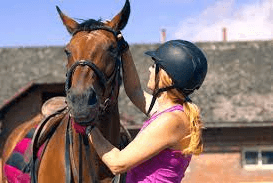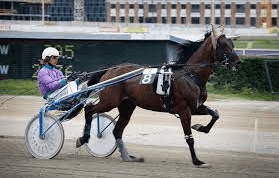How Can Injuries Be Prevented In Eventing?

In the fast-paced and exhilarating sport of eventing, the risk of injuries to both horse and rider is ever-present. However, through proper training and conditioning, the use of protective gear, and careful course design considerations, these risks can be minimized.
This article explores various strategies that can be employed to prevent injuries in eventing, providing evidence-based information for riders, trainers, and organizers alike.
The foundation for injury prevention in eventing lies in the establishment of a comprehensive training and conditioning program. Riders must ensure that their horses are adequately prepared physically and mentally for the demands of the sport.
This includes regular exercise routines that focus on strength-building exercises specific to eventing disciplines such as dressage, show jumping, and cross-country. Additionally, incorporating interval training sessions into the horse’s program can help improve cardiovascular fitness and enhance endurance levels.
By gradually increasing the intensity and duration of workouts over time while allowing for adequate rest periods, riders can minimize the risk of strain-related injuries during competition.
Proper Training and Conditioning
Proper training and conditioning are essential for minimizing the risk of injuries in eventing, promoting the well-being and longevity of both horse and rider.
One key aspect of this is ensuring that horses receive appropriate nutrition and hydration. A diet rich in high-quality forage, supplemented with balanced concentrates, can provide the necessary nutrients to support optimal health and performance.
Adequate hydration is also crucial, as dehydration can lead to muscle fatigue and increased susceptibility to injury.
Additionally, regular veterinary check-ups are vital to identify any underlying health issues or potential risk factors that may contribute to injuries. Routine examinations allow for early detection and treatment of conditions that could potentially impact the horse’s ability to compete safely.
Read also: What Are The Rules Of Team Penning?
By prioritizing proper training techniques, nutritious diets, hydration management, and regular veterinary care, riders can significantly reduce the likelihood of injuries occurring during eventing competitions.
Use of Protective Gear
The use of appropriate protective gear in the sport of eventing is essential for ensuring the safety and well-being of riders. Here are four reasons why proper fit and adherence to safety standards in protective gear can significantly reduce the risk of injuries:
1) Proper Fit: Protective gear, such as helmets and body protectors, must be carefully fitted to each individual rider. Ill-fitting equipment can hinder movement, restrict vision, or fail to provide adequate protection in case of a fall or impact.
2) Helmet Safety Standards: Helmets are arguably the most crucial piece of protective gear in eventing. They should meet established safety standards, such as those set by organizations like the American Society for Testing and Materials (ASTM) or European Norm (EN). These standards ensure that helmets have undergone rigorous testing to withstand impacts and minimize head injuries.
3) Body Protectors: Body protectors offer additional cushioning and support for vital organs during falls or collisions. Like helmets, they should comply with recognized safety standards. A proper fit is also crucial for body protectors to effectively distribute impact forces across the torso while allowing freedom of movement.
4) Impact on Freedom: While some may argue that protective gear restricts freedom, it actually provides a sense of security that allows riders to push their limits confidently. By wearing well-fitted protective gear that meets safety standards, riders can focus on their performance without undue worry about potential injuries.
Ensuring the proper fit and compliance with safety standards when using protective gear in eventing is vital for reducing the risk of injuries. Riders should prioritize investing in quality equipment that not only protects but also allows them to perform at their best while enjoying the freedom that comes with knowing they are adequately protected.
Course Design Considerations
Course design considerations play a crucial role in ensuring the safety and enjoyment of riders in the sport of eventing.
Course modification is an important aspect of course design that can help prevent injuries.
By carefully assessing the terrain, obstacles, and distances between jumps, course designers can create courses that are challenging yet safe for both horse and rider.
They can make adjustments to the height, width, and placement of fences to ensure they are suitable for the level of competition and skill of participants.
Additionally, rider education is another key factor in injury prevention.
Riders must be well-trained and knowledgeable about proper riding techniques, as well as how to approach and navigate different types of obstacles.
By providing comprehensive training programs and educational resources, event organizers can help equip riders with the skills necessary to safely navigate through courses.
Overall, by considering course modifications and emphasizing rider education, event organizers can significantly reduce the risk of injuries in eventing.
Frequently Asked Questions
What are some common mistakes beginners make in eventing that can lead to injuries?
Common beginner rider mistakes in eventing that can lead to injuries include inadequate warm-up, poor position and balance, inappropriate horse selection, and lack of proper training and education. Proper warm-up is crucial for injury prevention.
Are there any specific exercises or drills that can help improve rider balance and stability in eventing?
To improve rider balance and stability in eventing, various exercises and techniques can be employed. One effective exercise involves performing transitions within gaits to enhance core strength and coordination. Another technique is practicing two-point position to develop a secure seat and balance.
Can wearing additional safety equipment, such as air vests or neck protectors, further reduce the risk of injuries?
The use of additional safety equipment, such as air vests and neck protectors, in eventing can potentially reduce the risk of injuries. Research suggests that air vests are effective in reducing the severity of injuries, while neck protectors provide benefits by protecting against cervical spine injuries.
How important is the role of a qualified coach or instructor in preventing injuries in eventing?
The role of qualified coaches in eventing is crucial for injury prevention. They act as navigational beacons, guiding riders through the treacherous terrain of training and competition, ensuring proper technique and skill development to mitigate risks.
Are there any specific factors or conditions that increase the risk of injuries during cross-country riding in eventing?
Factors such as the level of experience, speed, terrain, and weather conditions can increase the risk of injuries during cross-country riding in eventing. These factors require careful consideration and preparation to minimize the potential for accidents and injuries.
Conclusion
In conclusion, injuries in eventing can be effectively prevented through a combination of proper training and conditioning, the use of protective gear, and course design considerations.
By ensuring that riders are adequately prepared for the physical demands of the sport, including building strength and endurance, they can minimize the risk of injury. Additionally, the implementation of protective gear such as helmets, body protectors, and safety stirrups can offer crucial protection in case of falls or accidents.
Furthermore, course designers play a pivotal role in injury prevention by creating well-designed courses that prioritize safety. They can strategically incorporate various elements such as appropriate jump heights and distances to ensure a fair yet challenging competition while minimizing potential risks. By considering factors like terrain conditions and weather patterns during course design, organizers can further enhance safety measures.
Ultimately, these preventative measures work together to create an environment that prioritizes rider safety while still allowing for a thrilling and competitive eventing experience.
Through proper training and conditioning methods, careful use of protective gear, and thoughtful course design considerations, injuries in eventing can be significantly reduced.
As riders take their positions at the starting line with determination etched on their faces under the bright morning sun, they are equipped with not only physical prowess but also a sense of security offered by their helmets gleaming like shining armor atop their heads. The cheers from enthusiastic spectators echo through the air as each jump is cleared with grace and precision.
In this carefully nurtured ecosystem where rider safety thrives alongside fierce competition, eventing becomes not only a sport but also an art form where boundaries are pushed without compromising on well-being.




